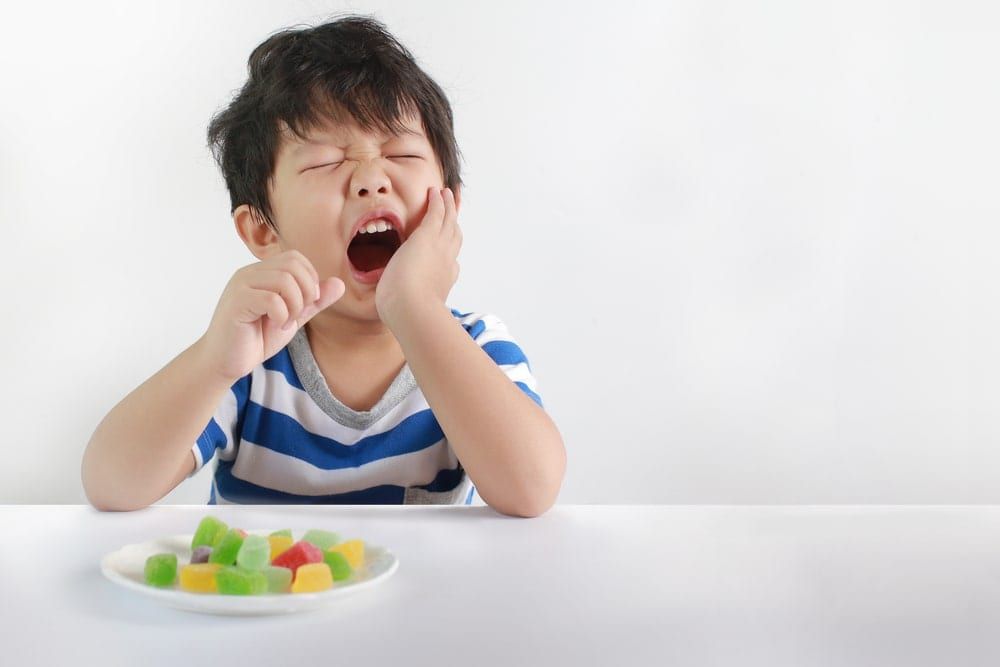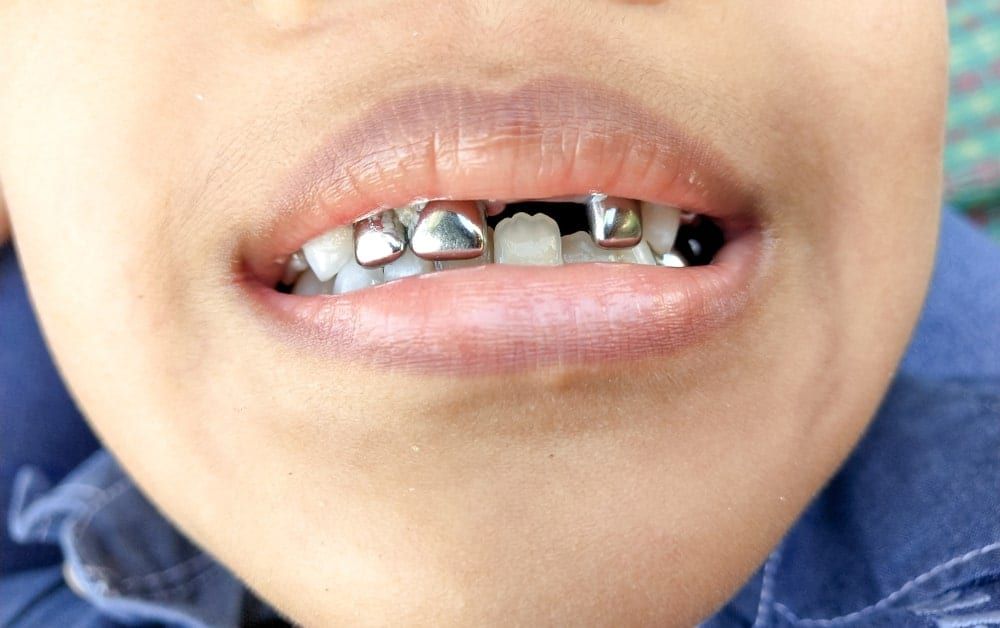Pulp therapy is a restorative technique used by pediatric dentists to save a severely decayed primary tooth wherein the decay has reached the pulp layer of the tooth. It is similar to a root canal and is also commonly referred to as pulpotomy, pulpectomy, or nerve treatment. Pulp therapy removes the decayed tissue to prevent the loss of the tooth or the spread of infection. There are two types of pulp therapy:
Vital pulp therapy is when only the decayed pulp is removed and the healthy pulp tissue is preserved inside the tooth. A solution is also placed inside the tooth to prevent bacterial growth and patient discomfort. Finally, the tooth will be restored using a stainless steel dental crown.
Non-vital pulp therapy is when all the pulp in the pulp chamber and root canals is infected and must be completely removed. Following the removal of the decayed tissue, the inside of the tooth is cleaned and filled with a special material. Over time, this material will be safely absorbed by the body so that the primary tooth will be naturally lost when it comes time for the permanent teeth to erupt. In the meantime, a stainless steel crown is placed to protect the tooth.
Did You Know?
The World Health Organization (WHO) notes that 60-90% of school-aged children around the world are affected by dental cavities that require dental treatment.
Frequently Asked Questions:
Does my child need pulp therapy?
Signs that your child may need pulp therapy can include some or all of the following:
- Tooth pain with no apparent cause
- Tooth sensitivity to hot and cold that remains even after the stimulus is removed
- Swelling or redness in the gum tissue around the affected tooth
- If the tooth is cracked, chipped, or otherwise damaged

In some cases, children may show no symptoms. During your child’s regular dental checkups, Stone Oak Pediatric Dentist Dr. Torres will examine your child’s teeth to determine if any type of restorative treatment is required.
If severe decay is found, then pulp therapy will likely be recommended to preserve the tooth. Although primary teeth will eventually be naturally lost to make room for permanent teeth, primary teeth that are lost too soon can cause problems that can negatively affect the incoming permanent teeth. For example, the permanent teeth may erupt crooked or tilted, as well as being overcrowded. Additionally, primary teeth are essential for proper speaking and eating functions, so their preservation is of the utmost importance.
What is the difference between a baby root canal and an adult root canal?
Although they may sound similar, there are actually a few key differences between a baby root canal (pulp therapy) and an adult root canal. First, permanent fillings are not placed in the nerve canal during a baby root canal. This is so that the tooth can naturally be lost when it is time. Secondly, decay spreads at a quicker rate in baby teeth than it does in adult teeth, therefore the need for pulp therapy can be greater than the need for an adult root canal.
What type of dental sedation will be used during pulp therapy treatment?
Most cases of pulp therapy treatment can safely be performed with local anesthetic and minimal sedation. Conscious sedation with nitrous oxide is usually enough to relax an anxious child so that the procedure can be performed. For more information on conscious sedation, see our services page. In rare cases, a heavier sedation method may be advised. If this is the case, Dr. Torres will discuss this with you ahead of time.
What can I expect when my child receives pulp therapy at Kids World Pediatrics?
When your child receives pulp therapy at Kids World Pediatrics, they will be given a local anesthetic and a sedative to keep them pain-free and relaxed. The procedure will begin with Dr. Torres making a small hole in the top of the tooth to access the dental pulp. Depending on the type of pulp therapy being performed, some or all of the dental pulp will be removed. Once the decayed tissue is removed, the area will be cleaned and then filled with a special material called gutta-percha. Gutta-percha is a rubber-like material that will provide internal support for the tooth. After pulp therapy has been completed, a stainless steel dental crown will be placed over the tooth to protect it.

How do I care for my child after they receive pulp therapy?
After your child receives pulp therapy, it may take a few hours for the dental anesthetic to wear off. If nitrous oxide was used as a sedative, then your child will be alert as soon as they stop inhaling the gas. In the days following their procedure, they may experience some residual pain caused by inflammation as a result of the previous infection. They may also experience some tooth sensitivity. Both these things should resolve themselves within a week. Your child will be able to return to their usual daily dental routine and it is important that you encourage them to do so.
